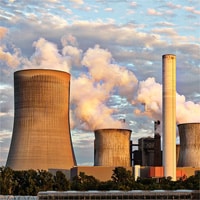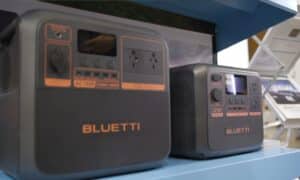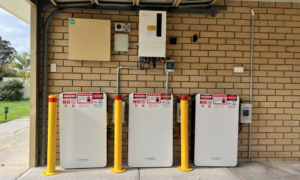Coal-dependent energy companies AGL, EnergyAustralia and Origin Energy head the latest list of Australia’s carbon emitters.
Australia’s three biggest energy companies rely on coal-fired power generation in Victoria and NSW. These coal-based energy companies rank one, two and four respectively in the national emitters Top 10 compiled by the Clean Energy Regulator (CER).
Electricity generation is the largest single contributor to total emissions, CER’s annual ‘National Greenhouse and Energy Reporting‘ data shows. It makes up half (50.3 per cent) of all reported scope 1 emissions – up from 49.7 per cent the previous year.
The full picture: Emissions are growing
‘Scope 1’ greenhouse gas emissions are those resulting directly from a company’s activities. In this case, burning coal to make electricity.
https://www.facebook.com/climatecouncil/videos/2524874597540089/
Scope 1 emissions grew slightly to 336.3 million tonnes in the 2017-18 reporting year. This is an increase of 0.8 million tonnes or 0.2 per cent on 2016-17 levels.
However, the overall rate of growth in scope 1 emissions has slowed.
Increased emissions are largely due to growth in the liquefied natural gas (LNG) sector, oil and gas production and coal mining. Yet this was offset by a fall in emissions of 6.8 million tonnes in the electricity sector due to:
- Switch from brown to black coal generation
- Closure of Hazelwood power station in Victoria
- Increase in renewable production from solar panels
Coal-based energy companies contribute to emissions rise
Coal-fired power is still front and centre of the major energy companies’ generating capacity.
As reported by the Sydney Morning Herald, AGL remains the largest carbon emitter in the country. Emitting a massive 43.1 million tonnes, AGL has, however, reduced its overall emissions by 200,000 tonnes over the previous year.
AGL owns the Bayswater and Liddell coal-fired plants in the NSW Hunter Valley. It also owns Loy Yang A in Victoria’s Latrobe Valley. Liddell is due to close in 2022, which will cut around 14 million annual tonnes of emissions.
EnergyAustralia comes in at 21.7 million tonnes with coal-fired plants in Victoria (Yallourn) and NSW (Mt Piper). Origin Energy clocks up 18.1 million tonnes from Australia’s largest coal-fired power plant, Eraring in NSW.
CER figures clear confusion over emission levels
CER’s annual National Greenhouse and Energy Reporting data helps settle confusion over whether Australia’s emissions are rising or falling.
Federal Energy Minister Angus Taylor insists emissions are falling. Prime Minister Scott Morrison also says Australia will meet its Paris emission targets “at a canter”.
Yet the Organisation for Economic Co-operation and Development (OECD) claims Australia has one of the highest rates of non-renewable energy use among its 36 member countries. That’s in spite of a boom in solar energy and battery storage.
Its Environmental Performance Report of Australia also found emissions are more likely to rise rather than fall without intervention. While coal-based energy companies are transitioning to other sources, Australia’s massive population growth means that demand is increasing for energy overall.
Our professional solar installers in Melbourne will assess and determine your energy needs. We customise a solar panel system in Melbourne to fit the roof size of your property, ensuring you receive the most suitable solar panel system for your Melbourne home, meeting to property’s energy requirements.












































